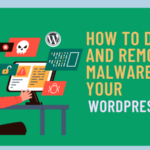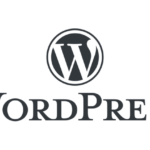Protecting your WordPress site from vulnerabilities might feel like a techy tightrope walk. But it doesn’t have to be. With the right tools and strategies, you can secure your site without losing sleep.
Start with easy wins: updates, plugins, and data protection measures are key players. Each choice fortifies your digital stronghold against lurking threats.
Got fifteen minutes? That’s all you need to pick up the basics today and keep potential headaches at bay tomorrow.
Curious how? Read along!
Understanding core and plugin updates for safety
Regularly updating your WordPress core and plugins keeps your site resilient against vulnerabilities. Think of updates as routine maintenance on a car; they patch up existing issues and bolster overall performance.
Stay informed about available updates through the dashboard notifications. It’s wise to test these in a staging environment first, which ensures compatibility without disrupting live operations.
Using an automated update service can save time but requires careful oversight to prevent unwanted changes. This strikes a balance between convenience and control over each component’s security level.
Plugins themselves require attention. Focus on maintaining active, reputable ones while eliminating those you no longer need or use. This helps reduce potential entry points for attacks.
Setting reminders for regular reviews of your site’s plugins ensures you’re never caught off-guard by outdated software leaving cracks in your defenses, keeping everything running smoothly instead.
The role of routine WordPress maintenance in security
Routine maintenance plays a crucial role in safeguarding your WordPress site. It’s like keeping a car tuned to avoid unexpected breakdowns. You might consider scheduling regular check-ups, ensuring that plugins and themes stay current and functioning as they should.
Attention to detail helps catch small issues before they escalate into significant problems. Tools designed for WordPress maintenance by Freshy Sites, for example, provide automated solutions tailored to specific needs while minimizing downtime.
Backup protocols become an essential part of this routine; having recent copies lets you quickly restore content if trouble arises. Maintaining robust backup systems reduces stress when facing potential data loss scenarios.
It could also help to analyze logs periodically, identifying unusual patterns that signal security threats early on. Taking these preventative measures ensures your website remains both reliable and resilient against evolving cyber challenges today and tomorrow.
E-commerce site protection: Unique considerations for WordPress stores
Securing an e-commerce site on WordPress requires specific focus areas. Transactions involve sensitive data, making robust protection essential. Payment gateways with strong encryption should top your list; they shield customer information from prying eyes.
SSL certificates are another critical element. They not only encrypt data but also boost consumer trust by displaying the secure padlock icon in browsers.
Monitoring transactions for irregularities can provide early warning signs of fraud attempts. Regularly updated security plugins tailored to e-commerce can detect and mitigate these threats efficiently.
Think about using content delivery networks (CDNs) as well, they reduce load times and offer additional layers of defense against DDoS attacks.
Finally, ensure checkout processes remain straightforward yet secure, maintaining user-friendly experiences without sacrificing safety standards. Balancing convenience and security creates a smooth shopping environment that customers will appreciate and trust.
DNS security best practices for your WordPress site
DNS security often flies under the radar but is vital. Start with DNSSEC (Domain Name System Security Extensions), which verifies domain authenticity to prevent attacks like cache poisoning.
Utilize reputable DNS providers offering built-in DDoS protection and filtering services that identify malicious traffic before it hits your site. This adds a proactive layer against threats.
Regularly monitor and update your domain’s WHOIS information, keeping sensitive details private with privacy services to deter data harvesting.
For enhanced control, configure firewalls at the server level to manage access and thwart unauthorized queries targeting vulnerabilities in your DNS settings.
Final thoughts on fortifying your WordPress site
Securing your WordPress site isn’t just a one-time task; it’s an ongoing process. By integrating updates, using the right plugins, and establishing strong DNS practices, you can create a robust defense system.
These measures not only protect against current threats but also prepare for future challenges. Consistent maintenance keeps vulnerabilities at bay while allowing your platform to adapt as needed. Prioritizing security ensures that your digital presence remains reliable and trusted in the ever-evolving cyber landscape.











Leave a Reply